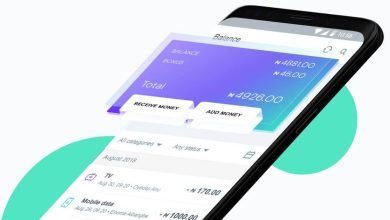How Do I Get a Home Loan?

The process of getting your first mortgage to buy your own home is a significant and exciting milestone to cross. But let’s just be real please, as a first timer, the whole process can also feel pretty difficult and overwhelming. I’ve been there before and also asked the question – How Do I Get a Home Loan?
The good part is getting approved for a home loan is very doable if you go in prepared and informed. With some smart planning upfront, the process doesn’t have to be painful.
In this article, I’m going to walk you through what to expect, and key steps to set yourself up to find the ideal mortgage.
The very first thing is taking a realistic look at where you stand financially and deciding if now’s truly the best time for you to take the plunge into home ownership. You need to really examine your current money situation before going all in.
Determine If You Are Eligible to Get a Mortgage
So, before filling out any applications, make sure to have an honest conversation with yourself and your finances. Take time to carefully consider your budget. This will determine the parameters for the type of home you can afford:
1. Calculate your total monthly income
Add up your gross monthly income from your job, any side work, investment returns, and other sources.
Tally up your gross monthly amount from your job, any side work, investments or other sources. This is what lenders will use to decide the size of loan you qualify for. Be realistic about your earnings.
2. Determine your monthly debts –
List out your monthly payments for all current debts including credit cards, student loans, auto loans, existing mortgages, child support, and any other regular payments you make.
3. Calculate how much house you can afford
You also need to calculate a home price range you can comfortably afford. Do the math to determine the total monthly payment, factoring in not just the mortgage principal and interest. But also, property taxes, homeowner’s insurance, private mortgage insurance if your down payment is under 20%, and HOA dues if it’s a condo.
4. Consider your planned down payment amount –
Getting a clear picture of where you stand financially helps determine if you’re ready to start home shopping and get a mortgage, or if you need a little more time to save up and improve your credit first.
It’s important to factor in the amount of down payment you have saved – it’s usually required to save at least 3.5% to 5%. Ideally 20% or more of the home price. Savings, gifts, loan programs can help. Cash is required for closing costs, which range from 2% to 5% of the total purchase price.
Ideally 20% or more of the home price. Savings, gifts, loan programs can help.
5. Use a mortgage calculator –
To estimate payments at different loan amounts, interest rates, terms. Add in taxes, insurance too.
By doing this exercise before even talking to a lender, you can zero in on a realistic price range and loan amount for your situation.
Improve Your Credit Score
Lenders will thoroughly check your credit report and score before approving you for a mortgage. The higher your score, the better the loan options will be for you. Here are tips for boosting your score:
- Review your credit reports from all three bureaus for errors – get any resolved immediately.
- Pay down existing debts like credit cards to lower your credit utilization ratio.
- Avoid new credit card or loan applications which cause hard inquiries on your report.
- Keep credit card balances low – under 30% of the limit is good. Pay in full each month ideally.
- Become an authorized user on someone else’s old account to add positive history.
- Maintain a good payment history by always paying bills on time. Set up autopay if needed.
Personal Loans FintechZoom: How it Works
Save for a Sizable Down Payment
Most conventional mortgages require at least 3-5% down, but 20% down or more is ideal. A larger down payment gets you a better interest rate and avoids private mortgage insurance (PMI). Here’s how to bolster your down payment funds:
- Start saving early, long before you plan to buy. Automate regular monthly transfers into your home down payment fund.
- Reduce non-essential spending temporarily to put more funds aside.
- Look into down payment assistance programs you may qualify for based on location, income, etc.
- Ask family members for gift contributions. Every little bit helps.
Coffee Break Loans – All You Need to Know
Choose the Right Type of Mortgage
The first step is learning about the main types of mortgages available, since you’ll need to choose the right loan for your situation.
Once you’ve assessed your finances, you can focus on picking the right mortgage type. There are many mortgage types to evaluate so you can find the best loan for your unique situation.
- FHA loans –
Offered by private lenders and insured by the Federal Housing Administration. Known for low down payments and more flexible credit requirements. Popular option for first-time home buyers.
- Conventional loans
Loans not backed by the government that are offered by private lenders. Typically require higher credit scores and down payments than FHA loans.
- VA loans
Offered by private lenders to eligible veterans and service members. A VA home loan does not require any down payment.
- USDA loans
100% financing for low-income borrowers in rural areas, offered by private lenders and backed by the U.S. Department of Agriculture.
Each mortgage type has its own pros, cons, eligibility guidelines, and costs. Do your research to decide which one best fits your financial profile and home buying goals.
Get Preapproved by Multiple Lenders
Don’t just assume you’ll use the same lender your real estate agent recommends. Shop around with various banks, credit unions, and online lenders to find the best rates and terms for your situation.
The preapproval process involves completing a full application with your income, assets, debts, and credit check. You’ll get a preapproval letter stating the amount and rate you qualify for.
Having this letter in hand makes your offer much more attractive to sellers. Get preapproved at the start of your home search process so you’re ready to bid.
Choose Your Loan Program and Lock the Rate
Carefully compare the mortgage offers from all your preapprovals once you’re under contract on a home. Review the lenders themselves too based on customer service, reviews and your overall impression.
When you’ve found the best loan option, move quickly to lock in your interest rate before it goes up. The lock secures the rate for 30-90 days typically. You’ll need to close within that window.
Submit Your Mortgage Application and Documentation
Now it’s time to formally apply for financing with your selected lender. Be extremely thorough and prompt providing all required documents and information, including:
- Employment verification – pay stubs, W-2s, tax returns
- Bank statements showing assets and cash reserves
- Investment and retirement account balances
- Liabilities – credit card statements, loan paperwork, alimony proof
- Property details like condo docs, HOA fees, home insurance info
- Other paperwork as needed – veterans form DD-214, gift letters for donors, etc.
Double check you have everything required before submission to prevent delays. Respond quickly if the lender requests additional materials down the line.
Get an Appraisal Done on the Property
The lender will arrange for an official appraisal report to confirm the property is worth at least the loan amount you need. Typical appraisal fees range from $350-$600.
If the appraisal comes under the purchase price, be prepared to bring extra money to close or renegotiate the price with the seller. Don’t lose the deal over a low appraisal.
Review the Final Closing Disclosure
Your lender is required to provide your completed Closing Disclosure form detailing every last cost associated with your loan at least 3 days before your closing appointment.
Scrutinize it carefully line by line. Be sure you understand what each fee is for. Question any that seem excessive or vague before signing off.
Sign Documents at Your Closing
This is it – time to seal the deal! First, arrive early with valid photo ID and a cashier’s check or wire transfer for the closing costs and down payment amount due.
Once there, you’ll sign several copies of your loan documents like the mortgage note and deed of trust. Again, read thoroughly before inking. Also sign insurance paperwork, title transfer deeds, and more.
Once done, you’ll get the keys to your new home.
Final Tips On How Do I Get a Home Loan?
- Seek preapproval early once you start looking at homes – takes time to process fully.
- Be extremely responsive to lender requests – slow document submission delays approval.
- Ask lender questions anytime you need clarification on the loan process.
- Lock your rate ASAP once your offer is accepted to avoid rate jumps.
- Review your closing disclosure closely – document fees you’re unsure of.
- Bring proper ID, funds for down payment/closing to a closing appointment.
By educating yourself upfront, improving your credit, saving steadily for a down payment, shopping lenders competitively, and working closely with your loan officer, you can secure the very best mortgage for your unique situation.
With preparation and persistence, the home loan process doesn’t have to be painful.



